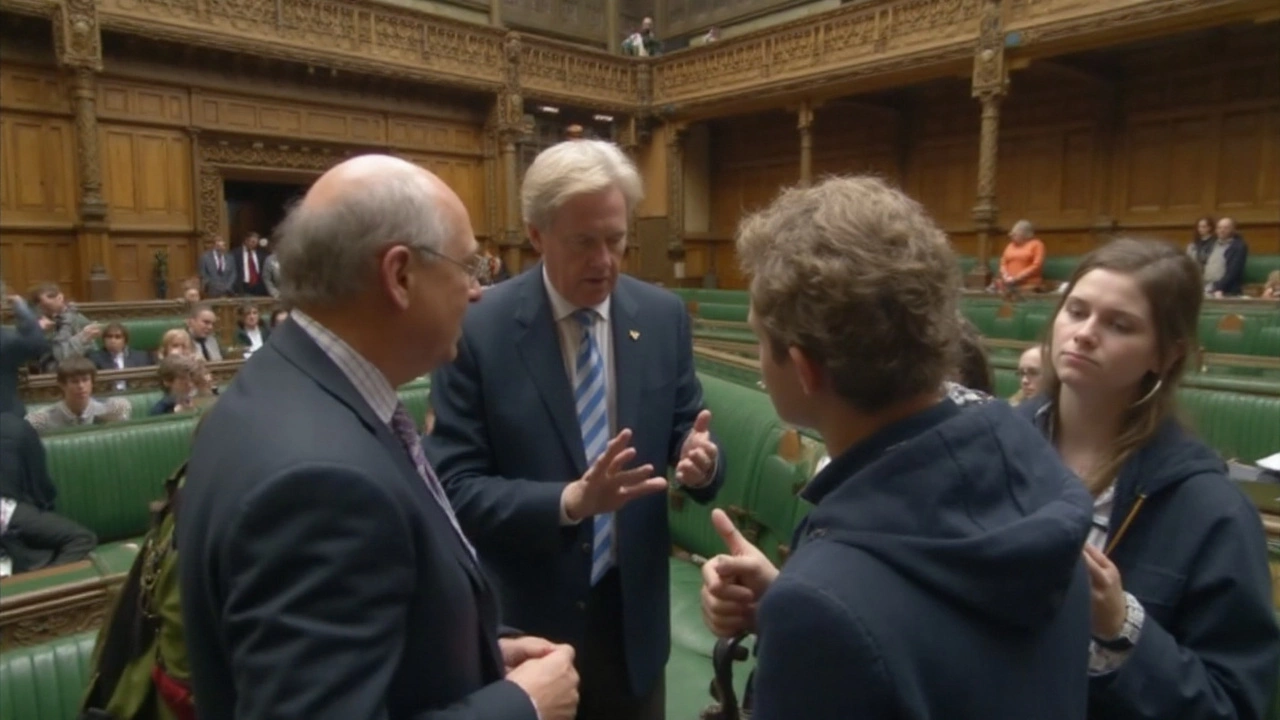Most people stop at a selfie with Big Ben. A guided pass gets you into the rooms where laws are made, monarchs open a new session, and ministers get grilled. This is not a theme-park set. It’s the real Palace of Westminster, still in use, still packed with history, and surprisingly intimate once you step beyond the gates.
The route is tightly organized, the commentary is rich, and the access is the kind you rarely find in a working legislature. Tours are structured, security is serious, and the etiquette is clear. But if you want substance with your sightseeing, this is the London ticket that delivers.
What you see on the tour
Your meeting point is Parliament Square by Winston Churchill. It’s the largest statue on the northeast corner, his name cut into the stone base. From there, guides lead small groups across to the entrance. Expect a formal security check before the first highlight: Westminster Hall.
Westminster Hall is the oldest part of the palace and it feels it the second you walk in. The span of the timber roof, the worn steps, the scale—this is where national life has paused for the biggest moments, from famous trials to lying-in-state ceremonies. It’s the gateway to everything that follows and a reminder that this building is a survivor, rebuilt, repaired, and reimagined over centuries.
From the hall you climb the Royal Staircase. Guides explain how the Victorian rebuild tied the modern palace to the monarchy, with processional routes designed for state ceremony. Queen Victoria’s imprint sits everywhere in the plan, blending pageantry with politics.
The Queen’s Robing Room is where symbolism turns up to full volume. Frescoes by William Dyce, heraldic carvings, and the Chair of State set the tone. This is the room used before the State Opening, where robes and the Imperial State Crown are put on for the short walk to the Lords. You don’t just see decoration; you see a stage set for constitutional theatre.
Next comes the Royal Gallery, long and grand. Portraits and historic scenes line the walls, and guides decode what’s on show and why. The point is clear: the story of Britain is meant to be read as you pass through. You’ll hear how the space frames the procession during the State Opening, and how ritual sits alongside everyday work.
Then the chambers: first the House of Lords, the most ornate political room you’re likely to enter. Red benches, gold canopy, the throne—this is where appointed members scrutinize bills, press ministers, and revise the detail that often gets missed in headline debates. It’s also where the monarch sits for the State Opening to set out the government’s program.
Across the way is the House of Commons, smaller, greener, and more hard-edged. You’ve seen it on television: the front benches, the dispatch boxes, the narrow floor that makes confrontations feel close. This is the chamber where the government of the day defends policy line by line and where backbenchers get their say.
Staff who live this building every day make the visit. Visitor Engagement Assistant Nick and Curator Eloise point out details you’d miss: objects that are historic but still used, layouts that shape how arguments flow, and traditions that quietly keep the place ticking. Their theme is simple—old doesn’t mean museum. The tools and symbols in these rooms still earn their keep.
Design is the thread that ties the tour together. The Victorian vision you see owes a lot to Augustus Pugin, whose Gothic Revival style gives the palace its identity: pointed arches, rich pattern, repeated motifs that turn politics into a visual language. With a guide, the ornament stops being just pretty and starts to make sense.
If you want a quieter feel, book a Saturday closing-time slot. When the building winds down, corridors empty and the scale of the place sinks in. You can stand at the edge of the chambers and hear the hush. It’s the same route, but the atmosphere is different—more reflective, less rushed.
Highlights come thick and fast. You’ll likely move through:
- Westminster Hall: the medieval heart and the grand entry point.
- Royal Staircase: the ceremonial climb with a view into Victorian statecraft.
- Queen’s Robing Room: Dyce frescoes, heraldry, and the Chair of State.
- Royal Gallery: portraits and history in one long sweep.
- House of Lords chamber: ritual, revision, and the throne beneath its canopy.
- House of Commons chamber: debates, questions, and the tight green benches.
The route shows the balance of the UK system: the elected Commons making and testing policy, the appointed Lords digging into detail and pushing for revisions, and centuries of ceremony framing the work. It’s not staged for tourists; it’s how the place runs.
How to plan your visit
Standard tours run about 90 minutes to two hours. They are guided, timed, and ticketed. Packages usually include entry and the guide. Hotel pick-up and drop-off, and tips, are not part of the deal.
Finding the start is easy: head to Parliament Square, northeast corner by Churchill, a short walk from Westminster Underground station. Aim to arrive 15 minutes early. You’ll go through airport-style checks, including a bag search. Travel light and wear comfortable shoes—there’s a lot of standing and a steady pace through long corridors.
Photography rules are strict: no photos inside. Security comes first and the line doesn’t blur. Phones stay in pockets once you’re past the entrance signs. It keeps the group moving and the building secure.
Accessibility is limited on these specific tours. Wheelchairs and strollers can’t be accommodated on the route as described, and mobility impairments make the stair sections difficult. If access needs are a factor, check alternative options before booking.
Cancellation policies matter. These tickets are in demand and time-slotted, so plan to commit. You’ll need to give at least 72 hours’ notice if plans change. Late cancellations usually mean no refund.
What to bring? A small bag, water, and patience for security. What not to bring? Big luggage, sharp objects, and anything that slows screening. Dress is casual—there’s no code—but avoid anything that might hold you up at the scanners.
Weekends feel different from weekdays. When Parliament is busy, some dates are tighter and the flow of staff is heavier; when it’s quieter, the place feels more like a gallery. Saturday closing-time tours are the insider pick if you want fewer people and time to take in the detail without a crowd at your shoulder.
Guides shape the day. Expect clear route maps, timing cues, and context you won’t get from a quick online search. They’ll point out why the benches in the Commons are close together, how the Lords fits into the legislative timetable, and what each ceremony actually does in practice rather than just what it looks like on TV.
If you’re a first-timer to London, this sits well with the rest of Westminster: Big Ben, Parliament Square, Whitehall, and the riverside path are all within a short walk. Build a buffer in your schedule—security queues fluctuate, and you won’t want to rush the last 15 minutes.
The big picture is simple: this is a working building, a UNESCO-listed landmark, and a lesson in how a country organizes power. It’s also a place of craft—stone, wood, paint, textiles—shaped by designers like Augustus Pugin and artists like William Dyce. Put the pieces together and you get a better read on Britain than any quick photo stop outside can offer.
If you’re choosing between headline attractions, weigh this on the side of substance. You’ll step through rooms that still set the national agenda, hear stories that make the architecture click, and follow the same path the monarch takes on state days. For travelers who like their history alive, Houses of Parliament tours are the rare ticket that shows politics at work rather than just on display.

